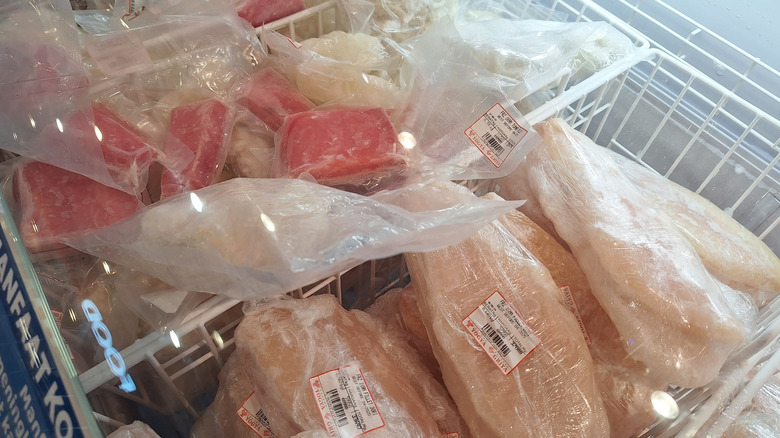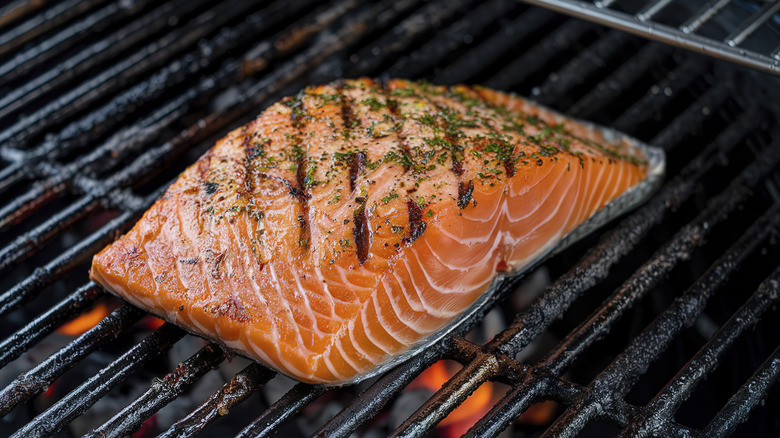Why Grilling Seafood Right From Frozen Is A Big Mistake
Cooking shortcuts are tempting, especially on a busy night. You're hungry, pressed for time, and that bag of frozen fish looks like an easy dinner solution. But when it comes to the grill, skipping the thaw is one shortcut that backfires fast. To find out why, we asked Trimell Hawkins, executive chef and culinary advisor at Current Backyard. "Frozen fish is the worst type of fish to grill," he told The Takeout.
"It tends to hold more water, so more must be done with it to grill [it] properly," Hawkins says. Since frozen seafood holds a lot of excess water, that moisture turns into steam the moment it hits the grill and blocks the surface from searing properly. Instead of a golden, caramelized crust, you end up with a soft texture, bland flavor, and fish that might still be raw at the center.
And it's not just about taste and texture, it's about technique. Forgoing the thaw is one of the most common mistakes people make when grilling seafood. If you want even browning, juicy texture, and a dinner that doesn't fall apart, take the time to thaw. It's the easiest fix with the biggest payoff.
The right way to thaw frozen seafood for the grill
If you want to grill frozen seafood, first thaw it properly. That can be done easily by transferring frozen fish or shellfish from the freezer to the fridge to let it defrost slowly, and ideally overnight. That way, the seafood will have time to reabsorb moisture, which ensures better cooking results. Quick-thawing methods, like running under warm water or using the microwave, will force moisture out too fast, and that's when you get a rubbery texture.
Once the seafood thaws in the fridge, it should be then dried thoroughly to get the juiciest results. This can easily be done by blotting it with paper towels. That will remove surface moisture, which helps achieve a better sear and keeps fish from steaming on the grill. Brush on a light coating of butter, oil, or even mayo to prevent the seafood from sticking to the grill. It adds fat, flavor, and creates a barrier between the seafood and the grill. The result? The perfect sear.
It takes a bit of planning, but the payoff is worth it: crisp edges, tender texture, good flavor, and seafood that doesn't fall apart.

